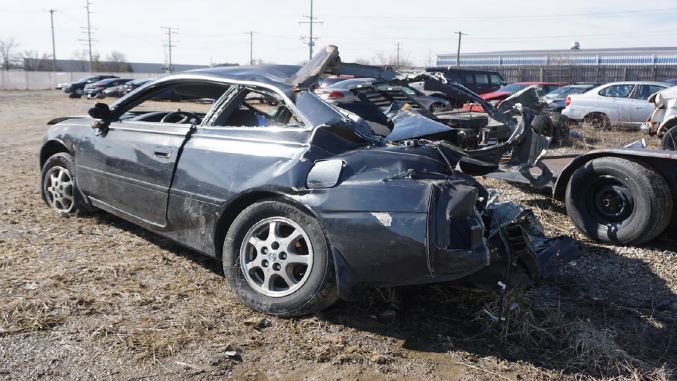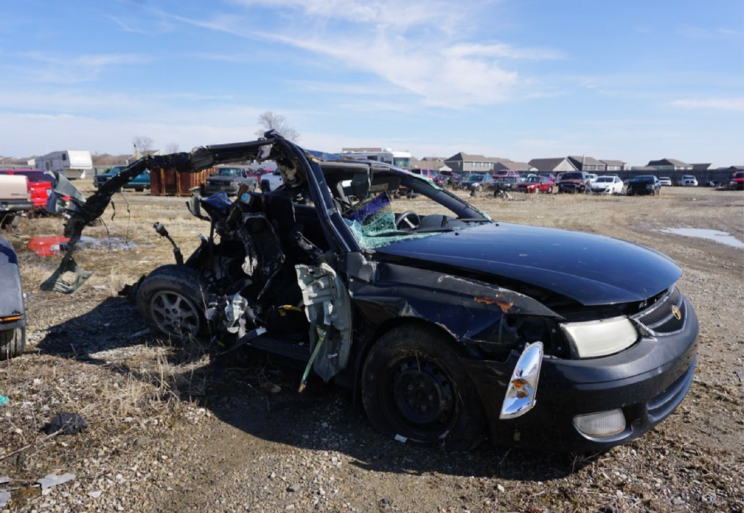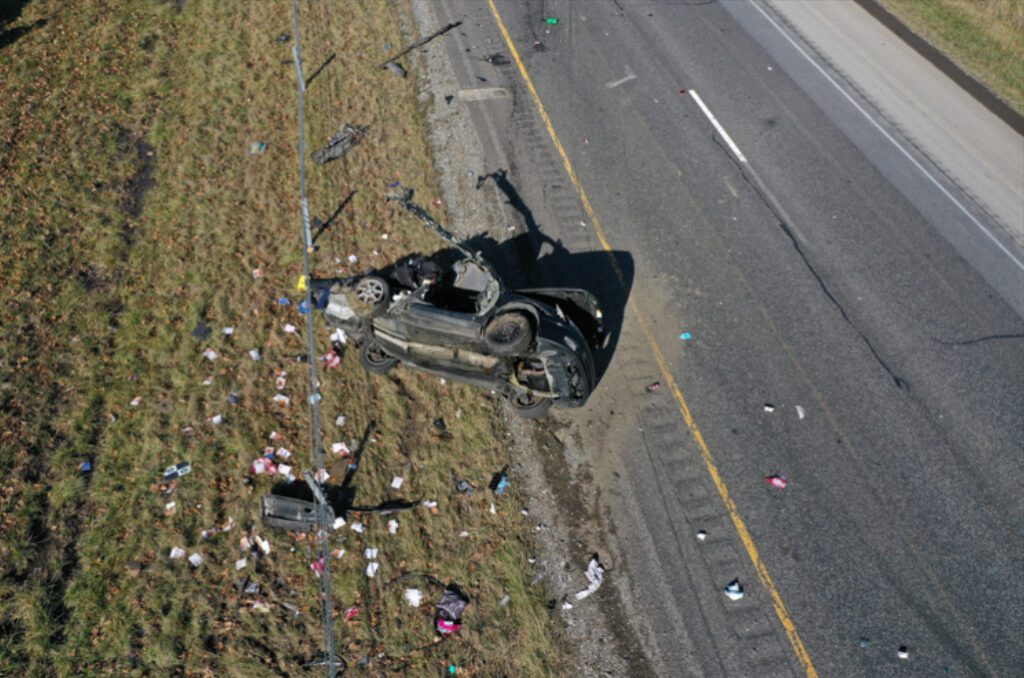When you’re driving down the highway and you see a stopped vehicle on the shoulder with its hazard lights on, what are you supposed to do?
If you’re in Indiana, the answer is “nothing.” You don’t have to move over unless it’s an emergency vehicle like a police car or ambulance. Moving over for non-emergency vehicles is merely a courtesy; not a law.
Seems pretty dangerous, if you think about it. Imagine that you’re sitting in your stalled car on the side of the interstate and cars continue to zip by you at 70–80 miles per hour. What if one of those cars hits you while you’re stopped?
If that scenario scares you, then you know what Lindsey Owens felt like when she was in that exact situation on I-65 near Franklin, Indiana, on January 3, 2022. She and her three-year-old daughter, Norah, were sitting in their stalled car when they were hit by a truck.
Lindsey survived the collision. Norah didn’t.
A Tragic Collision
Lindsey Owens was driving northbound on I-65 with Norah in the backseat. They were on their way to see Lindsey’s mother, Debbie Owens. All of a sudden, Lindsey felt her car jolt, and the engine started failing.
She knew something was wrong, so she turned on her hazard lights.
The car started slowing down despite Lindsey continuing to push on the gas pedal, so she pulled over as much as she could onto a narrow berm on the left side of the highway. She managed to get most of her Toyota Camry off the roadway.
Once the car was stopped, Lindsey called the police to report her stalled vehicle. Then she phoned a few friends to ask them to come pick up her and Norah. Lindsey and Norah were sitting in the stalled car for about ten minutes when, suddenly, a large Chevy pickup truck slammed into the rear right side of Lindsey’s car. Norah was sitting in the passenger rear seat.
The truck was traveling 78 mph at impact.
The Owens car flipped several times before finally resting on its left side.
Norah took the brunt of the impact. When Lindsey regained consciousness, she immediately looked for her beautiful baby girl and saw the unthinkable: She turned to see her baby hanging upside down, purple and blue in the face, struggling to take her final few breaths.
Emergency responders arrived on the scene shortly after, and Norah was quickly taken away in an ambulance, but she died en route to the hospital.
Changing Indiana’s Move-Over Law
In the months after this tragic fatality, Lindsey Owens and Norah’s father, Jory Banks, have been trying to pick up the pieces of their shattered lives. The driver who hit Lindsey and Norah couldn’t be charged with a criminal offense because Lindsey’s Toyota Camry wasn’t an emergency vehicle.
Currently, Indiana law only requires vehicles to slow down and move over for stopped emergency vehicles, including:
- Police vehicles
- Ambulances
- Fire trucks and rescue equipment
- Highway incident-response vehicles
- Highway maintenance vehicles
- Utility service vehicles
- Vehicle recovery equipment (tow trucks)
Violating the law can result in a fine and your license will be suspended up to two years if you cause damage to emergency equipment, injury, or death to an emergency worker.
Although it’s not the law, it’s still considered best practice for motorists to move over and slow down for stopped vehicles on the side of the road — especially on the interstate or highways where cars travel at higher speeds.
Many states already protect all disabled vehicles with their move-over laws. The most recent state to extend the law beyond just emergency vehicles is Maryland, and the new rule took effect October 1, 2022.
Indiana should do the same with its move-over law.
Norah’s Law will help save lives
We’re raising awareness about Norah’s story because we believe this tragic accident could have been avoided. We don’t want Norah to be just another traffic fatality. We want Indiana legislators to adopt a bill, “Norah’s Law,” that will expand the move-over requirements in the state to all disabled vehicles, not just emergency ones.
It’s our hope that Norah’s Law will bring awareness to Indiana drivers and encourage them to pay more attention when they see stopped vehicles on roadways. If we make Norah’s Law a reality, we can help save countless more lives.
How You Can Support Norah’s Law
Show your support for the creation of Norah’s Law by visiting norahslaw.com. You can learn more about Norah’s story and the background behind the Maryland legislation we’re hoping to emulate here in Indiana. You can also fill out a contact form with your name and email address to receive updates about Norah’s Law.
Another important way to help is to call your Indiana state representative or senator and ask them to sponsor a bill to expand Indiana’s move-over law. If you don’t know who your state legislator is, you can look it up on the Indiana General Assembly website.
Here’s a script you can use when you call your Indiana State legislator:
“Hello, my name is [your name], I’m a resident of [your city], and I’m calling to ask if you know about Norah Owens. She was three years old when she was killed in a traffic accident on I-65 near Franklin. Her mother had pulled the car over to the side of the road and put her hazards on, but a pickup hit them at 78 mph. Norah took the brunt of the impact.
Indiana’s move-over law currently only requires drivers to slow down or move over for emergency vehicles on the side of the road. A regular citizen, broken down on the side of the highway with her hazard lights on, doesn’t get the protection that emergency vehicles do.
I believe it would be in the best interest of all Indiana residents if the current move-over law, Title 9, Motor Vehicles, section 9-21-8-35, was expanded to apply to all vehicles, not just emergency ones. Maryland recently expanded their move-over law and it took effect October 1st. We should do the same thing here.
Norah’s Law can prevent more people from suffering the same fate as Norah Owens. I’m asking the [representative/senator] to encourage more safety on Indiana’s roadways by expanding the move-over law.”
IC 9-21-8-35 Vehicles displaying flashing lights; yield right-of-way; violation
Sec. 35. (a) Upon the immediate approach of an authorized emergency vehicle, when the person who drives the authorized emergency vehicle is giving audible signal by siren or displaying alternately flashing red, red and white, or red and blue lights, a person who drives another vehicle shall do the following unless otherwise directed by a law enforcement officer:
(1) Yield the right-of-way.
(2) Immediately drive to a position parallel to and as close as possible to the right-hand edge or curb of the highway clear of any intersection.
(3) Stop and remain in the position until the authorized emergency vehicle has passed.
Don’t let Norah’s death be in vain. Take action. Save lives.











